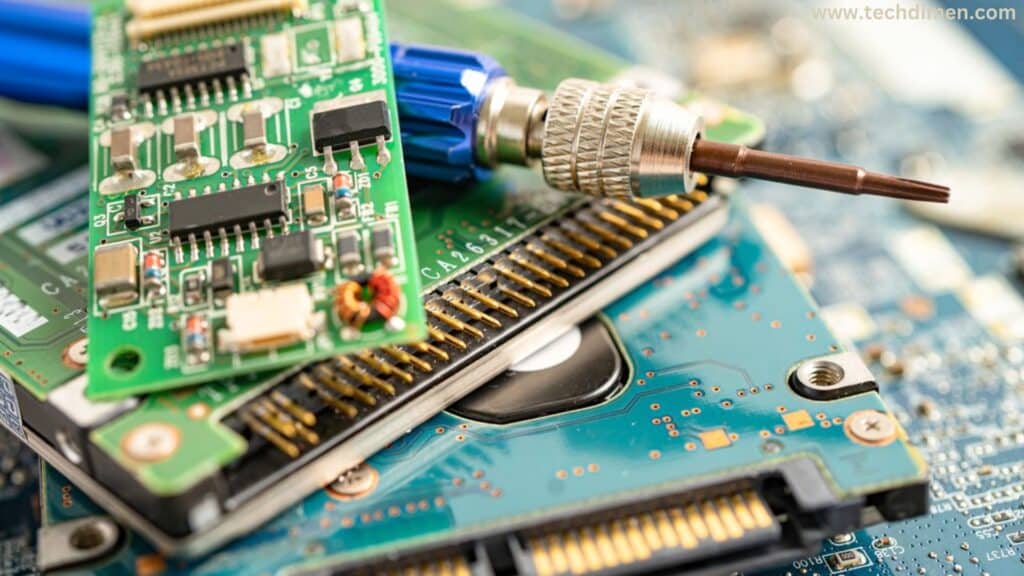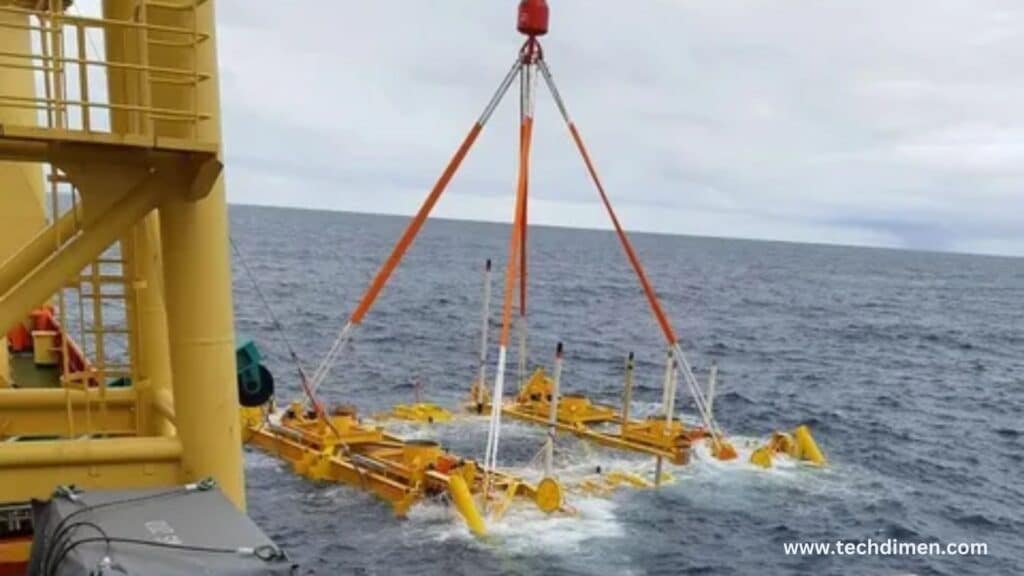The Subsea Technology News sector is entering a new era of transformation. With climate pressures, deep sea exploration demands, and a growing hunger for offshore energy, companies are pushing the boundaries of what’s possible underwater. This article covers everything from next gen cable systems and underwater robotics to zero carbon platforms and AI powered data gathering. If you are looking to stay ahead in subsea technology news.
The Push for High Voltage Subsea Cable Systems

One of the biggest shifts in offshore infrastructure revolves around the development of 132kV dynamic cables. These aren’t just wires in the sea they’re the backbone of floating wind farms, remote oil platforms, and future Subsea Technology News grids.
Major players like Nexans and Prysmian have begun producing 132kV cables capable of withstanding the dynamic loads of floating offshore wind (FOW) installations. Traditional cables simply can’t handle the constant motion, tension, and saltwater corrosion that these new applications demand. These new cables are equipped with cross linked polyethylene insulation, advanced metallic shielding, and modular connector heads. This allows for easier maintenance and improved resistance to both environmental stress and electrical overloads.
With the global transition toward increased adoption of FOW systems particularly in Europe and East Asia loating wind cables have become one of the most critical components of subsea power systems
Subsea Technology News Data Collection Enters the Smart Era
Underwater data has traditionally been difficult, slow, and expensive to collect. But things are changing fast. A new wave of innovation is simplifying subsea monitoring through artificial intelligence and this time telemetry.
In 2025, a white paper published by an international energy consortium laid out a strategy for reducing both cost and complexity in subsea data acquisition. It emphasized the use of AI assisted sensors capable of decision making at the seafloor, eliminating the need to constantly send data to surface operators. These sensors are now being paired with edge computing units submerged on the ocean floor, allowing for subsea telemetry without the latency issues seen in satellite based systems.
Another standout collaboration this year took place in the North Sea. Harvest and 3D at Depth partnered to create a digital twin of an existing subsea installation. This digital model not only allowed engineers to simulate repair scenarios but also facilitated predictive maintenance scheduling using machine learning. These kinds of developments show how digital twin North Sea applications are improving subsea asset integrity and reducing operational costs dramatically.
Toward Zero Carbon Subsea Technology News Energy Solutions
With global decarbonization goals becoming more urgent, the underwater energy world is under pressure to evolve. Fortunately, zero carbon subsea systems are no longer a distant dream.
SubCtech and Mocean Energy recently launched a fully autonomous power module that generates energy from ocean waves. The system includes wave energy converters, onboard batteries, and smart control logic to distribute power to underwater sensors and vehicles. Designed to operate for over a year without human intervention, this system is an important step toward building sustainable underwater infrastructure.
Meanwhile, Oceaneering and Kontiki Winds have inked a memorandum of understanding to electrify offshore assets using floating solar and wind platforms. Their plan is to connect renewable power directly to oil platforms, reducing diesel fuel consumption by up to 25% over the next two years. This bold move represents a practical step in merging renewable subsea energy with traditional oil and gas infrastructure.
Groundbreaking Hardware Subsea Technology News

Reliable subsea operations depend on rock solid hardware, and 2025 has seen some standout releases. One of the most anticipated launches is the BIRNS high amperage connector series. Engineered to deliver up to 1,000 amps, this compact connector system is ideal for powering subsea robotics and heavy-duty industrial equipment. It’s corrosion-resistant, high temperature rated, and compatible with modular subsea systems.
On the cooling side, R.W. Fern strum & Company celebrated 75 years in business by unveiling new compact cooling systems tailored for subsea applications. These systems are specifically designed for electronic housing in remote sensors and robotics. Their latest models use seawater driven heat exchange systems that are lightweight and energy-efficient.
Inspection technology also took a big leap forward. A new ultrasound system now provides remote, high resolution imaging with accuracy up to 0.1 millimeters. It enables non destructive testing in subsea environments where human divers cannot reach. The technology supports both scheduled maintenance and emergency repairs, often reducing inspection timelines by nearly 40%.
Legacy Players Continue to Innovate
Startups may be making headlines, but industry veterans aren’t standing still. On the contrary, they’re evolving fast leveraging decades of experience to drive cutting edge innovation beneath the surface.
For example, Ex pro, a trusted name in subsea engineering, just celebrated over 40 years of continuous operation. Throughout that time, they’ve carried out more than 250 subsea deployments, proving their staying power. Recently, they’ve taken a bold leap into the future by integrating AI driven underwater monitoring systems. These advanced tools use predictive analytics to detect corrosion and structural stress . Consequently, operators can respond faster and prevent costly damage before it happens.
Meanwhile, Kraken Robotics has also stepped up its game. To illustrate, their newest subsea laser scanner offers unmatched precision at depths of up to 120 meters. Because of this, pipeline inspections and seabed structure mapping are now more accurate and efficient than ever. In addition, Kraken introduced upgraded autonomous control systems, making their technology a leader in the fast growing field of automated subsea inspection.
All in all, these developments prove one thing: legacy companies aren’t just setting the pace. By combining deep expertise with new technology, they’re creating solutions that are both practical and visionary.
Innovation Hubs and Global Knowledge Exchange
Subsea breakthroughs don’t happen in isolation. This year, the Netherlands opened a state of the art subsea co innovation center. Equipped with high pressure testing tanks, simulation labs, and AI research facilities, the center is already hosting collaborative projects involving Delft University and major industry sponsors like TNO and Prysmian. Its goal is to shorten the time from research to world deployment.
At UTC 2023, the global community gathered to discuss the future of subsea technology. Topics ranged from offshore decarbonization strategies to hybrid power systems and subsea cybersecurity. Keynotes from executives at Siemens and ExxonMobil emphasized the need for greater data interoperability and automation. The conference closed with a firm message: global energy needs depend on smart, resilient subsea systems.
Top Subsea Technology Breakthroughs
| Innovation | Key Players | Purpose | Key Advantage |
|---|---|---|---|
| 132kV Dynamic Cables | Nexans, Prysmian | Connect floating wind farms | Durable, high-voltage transmission |
| Zero Carbon Power Pods | SubCtech, Mocean Energy | Power AUVs and underwater sensors | Clean, wave powered energy |
| Digital Twin Systems | Equinor, Shell | Monitor subsea infrastructure | time diagnostics & cost savings |
| Subsea Laser Scanning | Kraken Robotics | Detailed seabed and asset mapping | Fast, accurate, non-intrusive |
| Hybrid AUVs | Oceaneering, Kongsberg | Autonomous subsea inspection missions | Long range, AI powered operations |
The Road Ahead

Looking forward, several trends are expected to reshape subsea operations. Artificial intelligence will continue to play a major role in predictive maintenance and system optimization. Next generation hybrid AUVs will combine inspection, manipulation, and power delivery functions in a single chassis.
As countries increasingly turn to hydrogen fuel as a green alternative, there is a growing emphasis on enhancing pipeline monitoring. At the same time, efforts are underway to develop advanced composite materials for cable insulation, aiming to extend their lifespan and improve environmental sustainability.
Funding will also rise. The EU Green Deal and U.S. clean energy initiatives are expected to direct billions toward subsea innovation over the next five years. That capital will be key to scaling the tech we’ve covered here rom autonomous tools and AI to renewable subsea energy systems.
FAQs
What is Subsea Technology News?
Subsea technology refers to the equipment, systems, and methods used for underwater exploration, construction, inspection, energy production, and data collection. It’s commonly applied in offshore oil and gas operations, renewable energy projects like floating wind farms, and oceanographic research.
Why is Subsea Technology News important for offshore energy?
Offshore energy technology depends on reliable subsea systems to transmit power, monitor assets, and ensure structural integrity. As energy companies move into deeper waters and adopt floating wind and tidal systems, the need for advanced subsea cable systems, inspection tools, and power modules continues to grow.
What are 132kV dynamic cables and why are they a game-changer?
132kV dynamic cables are high-voltage subsea cables designed to handle the mechanical stress from moving platforms like floating wind turbines. They’re crucial for transmitting electricity from offshore floating systems to onshore grids efficiently and safely, supporting the rise of floating wind cables.
How are companies using AI in subsea operations?
Artificial intelligence is revolutionizing subsea data collection and monitoring. It enables telemetry, predictive maintenance, and anomaly detection through autonomous underwater vehicles (AUVs), smart sensors, and digital twin technology. AI reduces human intervention and improves data accuracy.
What is a digital twin in the context of subsea technology?
A digital twin is a virtual replica of a physical subsea asset or system. It’s used for simulation, diagnostics, and this time monitoring. In the North Sea, digital twins are now being used to simulate structural changes, assess maintenance needs, and enhance subsea asset integrity.
Are there zero carbon solutions in subsea energy?
Yes, companies like SubCtech and Mocean Energy are leading the way in zero carbon subsea systems. These include wave energy converters and autonomous modules that power underwater sensors and AUVs using renewable sources without relying on fossil fuels or traditional diesel generators.
How are underwater inspections being improved?
Modern subsea inspection tools now include high-resolution ultrasound systems, laser scanners, and autonomous drones. These tools support non destructive testing (NDT) and are used to assess structural health, corrosion, and stress without requiring divers or drydocking.
What is offshore electrification and how does it help the environment?
Offshore electrification refers to powering offshore platforms using renewable energy sources like wind, solar, or wave energy instead of traditional diesel generators. It reduces greenhouse gas emissions, improves operational efficiency, and plays a key role in offshore decarbonization strategies.
What’s the difference between ROVs and AUVs?
ROVs (Remotely Operated Vehicles) are tethered to a control ship and require human pilots. AUVs (Autonomous Underwater Vehicles) operate independently, using onboard navigation and AI to complete tasks. New developments are creating hybrid AUVs that combine both functionalities.
How is hydrogen being used in subsea systems?
Hydrogen is gaining traction as a clean fuel. Hydrogen pipeline monitoring ensures the safe transport of hydrogen across subsea pipelines. New subsea sensors and smart infrastructure are being developed to manage risks and ensure the integrity of hydrogen delivery networks.
What regions are leading in subsea innovation?
Regions like the North Sea, Norwegian Continental Shelf, and Asia Pacific offshore markets are driving most of today’s subsea innovations. These areas benefit from strong government support, offshore wind investments, and dense marine engineering ecosystems.
Final Thoughts
The deep sea is no longer just the realm of oil and gas. It’s the next frontier for clean power, big data, national security, and planetary survival. From smarter cables to autonomous underwater vehicles (AUVs) and AI managed inspections, the pace of innovation in subsea technology news is extraordinary and it’s only accelerating.
Companies that embrace these shifts early will not only survive, they lead. As governments demand cleaner energy and investors look to climate friendly tech, subsea innovation stands at the heart of the next industrial revolution.

Jhon AJS is a tech enthusiast and author at Tech Dimen, where he explores the latest trends in technology and TV dimensions. With a passion for simplifying complex topics, Jhon aims to make tech accessible and engaging for readers of all levels.







